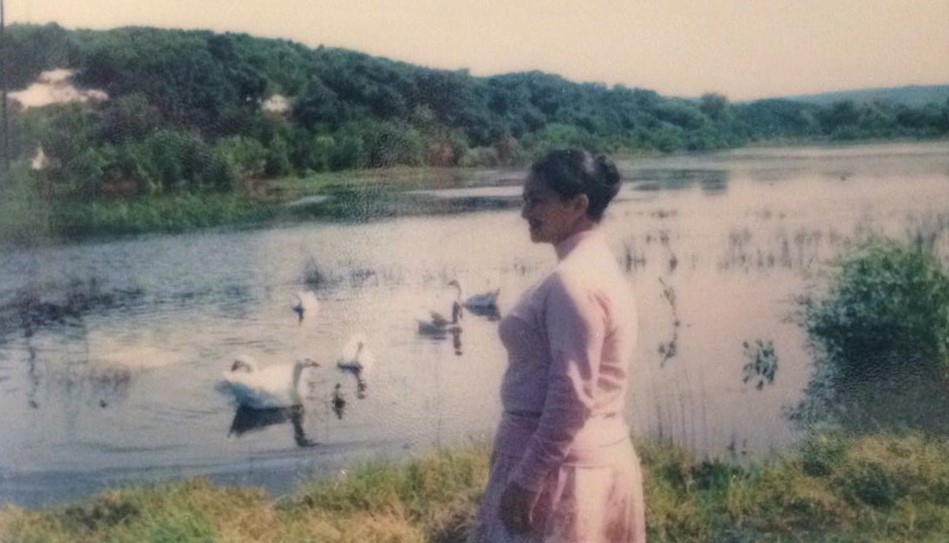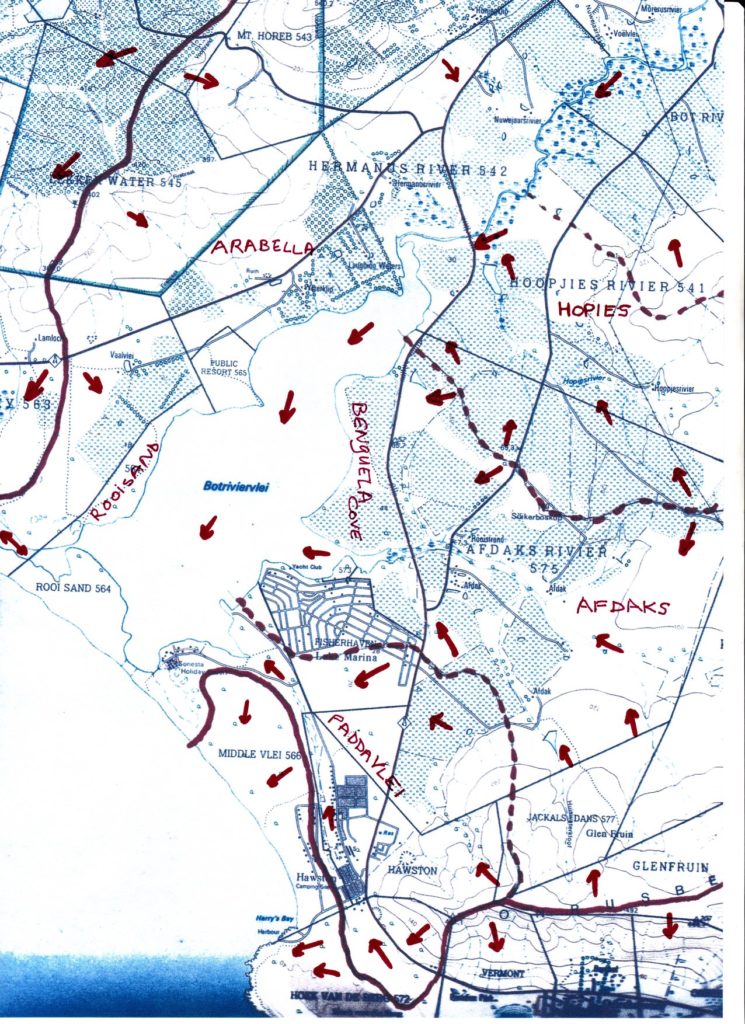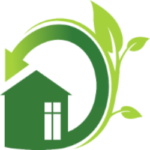

The Paddavlei ecosystem in Hawston, Western Cape, South Africa is a critical wetland area in need of rehabilitation. A body of concerned residents formed the Paddavlei Ecosystem Group (PEG) which operated under the Hawston Development Association (HDA). PEG initiated an environmental report on the Paddavlei, available for download below. A summary of this report is available as a separate post and a number of other documents are grouped in a separate post. A Facebook page ‘I love the Hawston Paddavlei and its Milkwood forest‘ contain many pictures and comments on Paddavlei activities.
The Paddavlei ecosystem wetland consists of, an open water body in Hawston, with its associated wetlands and catchment area. It is located in a suburb of Hermanus in the Western Cape and is an important part of the environs of the estuary. A brief history of the Paddavlei is that until 10 years ago it was a stable body of water, with birds, fish and other fauna. There was some pollution entering the system from the streets of Hawston but it had remained more or less stable in size and was handling the pollution fairly well. This situation changed dramatically in the last 10 years for three main reasons:
The above effects have had a large effect on the Paddavlei:
Where the Paddavlei water-course enters the estuary, visible pollution is now the norm. This is getting worse with time, and in a very wet year, could dramatically increase. The National Environmental Department, the DEA&DP (Department of Environmental Affairs & Development Planning) and the local environmental department all agree that the Paddavlei system is worth saving. The only real differences between these bodies and Botfriends is the scale of the problem and particularly the timing of interventions. The local Minster, Minister Anton Bredell, recognises the problem and caused a body PJAT (Paddavlei Joint Action Committee) to be established in 2018 as requested by PEG (Paddavlei Eco Group).
Workshops on a report from PEG on the Paddavlei Ecosystem Rehabilitation (Austin, 2017) were held in 2017, with the DEA&DP, and a report was presented by the DEA&DP on the Paddavlei ecosystem. The local environmental department, together with PEG, held two clean up days with local children. PJAT was established in 2018, and has held a few meetings, but with no budget yet, has not as yet done much action. The chairperson of Botfriends is a founding member of PEG, and a member of PJAT, but, with the very limited budget of Botfriends, Botfriends has not been able to contribute financially. PEG and local government, mostly the environmental department, has started with a clean-up of a small area bordering the Paddavlei, together with school kids and the Hawston Kadets/Scouts. PEG received a small grant in 2019/2020 which will promote the interests of the Paddavlei. PEG held a successful march and clean-up through the streets of Hawston in 2019. Pictures and videos are available on the PEG Facebook page ‘I love Hawston’s Paddavlei and Milkwood forest’. A tender for what to do about the Paddavlei, is in the process of being awarded, hopefully followed by some action on the ground.
The will to rehabilitate the whole Paddavlei ecosystem is there, with good support from the local community to re-establish a stable, sustainable ecosystem. This will act as a catalyst to the local community and avoid a pollution disaster of the Bot River Estuary. Timing is becoming more critical as in the last two years, the system has deteriorated dramatically, which has caused the costs of rehabilitation to Increase radically. As the Paddavlei ecosystem is a critical part of the environs of the estuary, as reported elsewhere Botfriends has put forward a funding proposal the BACP (Botfriends Alien Clearing Program) which includes rehabilitating the whole of the Paddavlei ecosystem, part of the Afdaks River ecosystem and the west bank of the estuary. This project is mainly concerned with alien clearing, which will re-establish clean water-flows into the Paddavlei, rehabilitate the wetland areas below the Paddavlei, including the Skilpadsvlei, and allow nature to work with us to handle the pollution accumulated in the system. There are obviously other costs involved in the Paddavlei, such as dealing with reed invasions and halting pollution from entering the system. These will cost less and be manageable if aliens are removed from the system.
The Paddavlei ecosystem wetland can then recover more effectively. An environmental corridor from the water of the estuary linking through the open water-bodies and wetlands to the proposed corridor on Hoek van die Berg from the sea to the mountains can be established.

The documents referred to in the text can be downloaded below:

Recent Comments